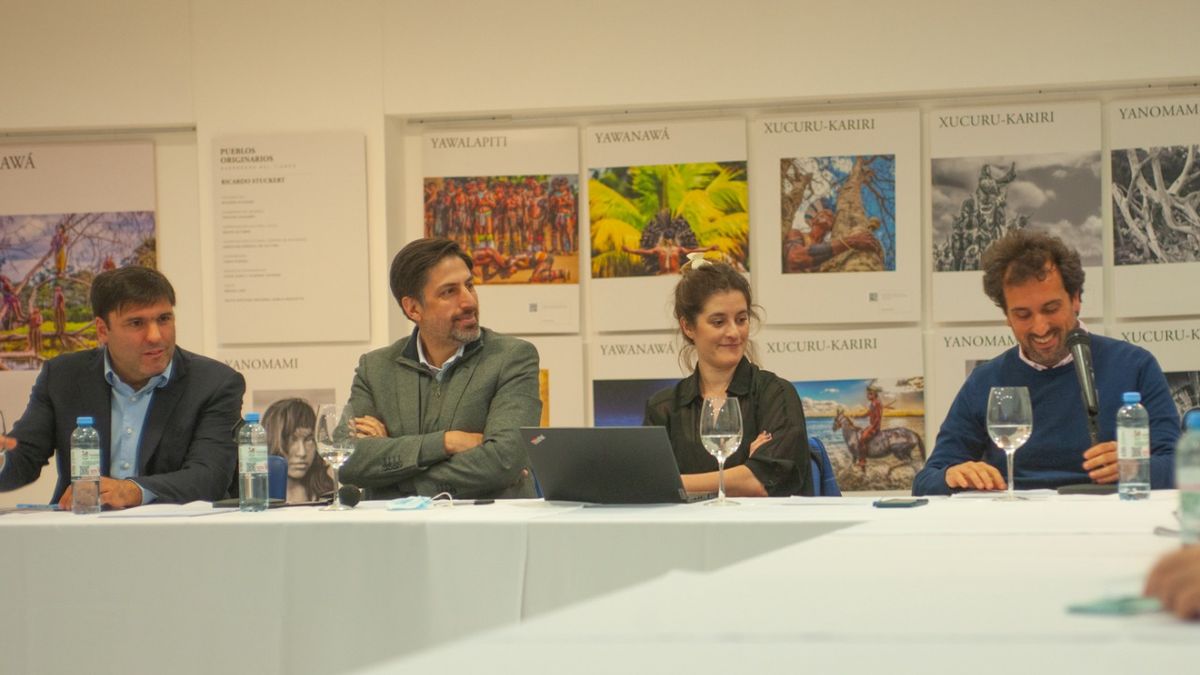The meeting was moderated by the general director of the CCD and former Minister of Education of the Nation, Nicholas Trottawho stressed that “it is necessary for the Government to deploy a roadmap with concrete measures against inflation that allow the generation of confidence in the different sectors.”
“It is Coordination between the different areas of government is essential and understanding with other political, business and labor forces. That is why we at the CCD promote this type of meeting to search for ideas, at a time when we see that there is little reflection in general among political actors”, he said.
For its part, Augustine Gallardochief economist of the Investment and Foreign Trade Bank (BICE), highlighted in his participation that the inflation “dumbs down and distorts” all prices relative to the economy, with credit impactwhich is a central engine for the development of investments that stimulate the growth of countries.
“Countries with high inflation deteriorate credit. This is because when prices change, the price of money changes. And, furthermore, no one wants to make contracts that are too long because they don’t know what will come in the future”, commented Gallardo.
Meanwhile, for the former executive director of ANSES, Diego Bossioinflation is the biggest problem in Argentina since “a long time ago, it hurts and hurts a lot”.
A point raised by Bossio in which his colleagues on the panel agreed is that “With inflation above 30%, economic growth is compromised. With low or moderate inflation, you grow between 7 and 8 years of each decade; with high inflation, you grow one year yes and another no”.
umet inflation (1).jpeg
Among the data pointed out by the Equilibra economist, it stands out that “from 1944 to the present, in the years in which inflation was less than 15%, the average GDP growth was 5.2%; when there was between 15% and 30%, the growth was 3.3%; when it was above 30%, the growth was 0.3%”. According to him, this shows that inflation decisively affects growth.
for Bossio “Argentina does not suffer from external restrictions”, because there are more than 256,000 million dollars, “but the problem is that they are not in the system. They are not in the Central Bank or as a flow”, he stated.
The cost key
From the beginning of his presentation, the chief economist of the Argentine Industrial Union (UIA), Diego Coatzwanted to make a conceptual difference by noting that the inflation it is the persistent variation in prices and not a jump in relative prices, as occurred in the 2001 crisis.
He stressed that “talking about concentration and greed to explain inflation does not contribute to the debate. This does not mean that we cannot discuss extraordinary returns or oligopolistic markets. This is a discussion of commercial, productive and value chain policy. It is not discussing inflation, which is a macroeconomic issue”.
He also sought to make it clear that “To speak of multi-causal inflation is not to say much”. The central concept of his presentation was that of “the review of the dynamics of costs”, among which he highlighted the price of commodities; the exchange rate and the availability of dollars; fees and wages, among others.
“I would say that you have to go both ways. First, let’s try to avoid devaluation. And if we can’t, let it be orderly and stabilizing. Second, we must not forget the feedback between the macroeconomy (to generate confidence in the national currency and order relative prices) and production and development policies”, he stated.
rebuild the currency
First of all, in his exposition Marina Dal Poggetto highlighted that in Argentina the rate of inflation It “has a lot of influence” on consumption and investment decisions. And he pointed out that the low amount of credit available in the country has to do with the way Argentines generally save: outside the financial system and outside their currency.
“A currency is built so that whoever bets against that currency loses,” he emphasized, commenting that “after the 2001 crisis, Argentina had the opportunity to build its currency and squandered that opportunity to force the growth rate via extraordinarily expansionary fiscal policies.
For the director of EcoGo it is clear that “what is happening in Argentina is a violent distortion of relative prices. Last year and as in all election years, on both sides of the divide, the exchange rate lag was always used to improve growth. When you look at the dynamics of prices, there are some that are rising at twice the rate of inflation and others that are frozen.”
In the final reflections of the meeting, the general coordinator of the IET, Mariano DeMiguel, He stressed that according to his vision “Argentina’s great challenge in terms of inflation is to find a price anchor. The problem is that, if we review the main levers of costs that in turn govern price dynamics, the anchor does not seem easy to determine”.
De Miguel explained that “international prices acknowledge receipt of the global context. The rates and the exchange rate are at the mercy of the agreement with the IMF. And using wages as an anchor in the current national context would not be easy or desirable.”
Source: Ambito
David William is a talented author who has made a name for himself in the world of writing. He is a professional author who writes on a wide range of topics, from general interest to opinion news. David is currently working as a writer at 24 hours worlds where he brings his unique perspective and in-depth research to his articles, making them both informative and engaging.




